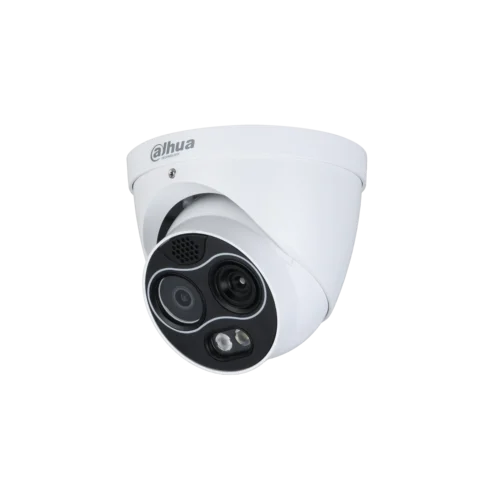All objects, people, animals and plants radiate infrared. A thermal IP camera, also called a thermal imaging camera, has a sensor that can measure infrared energy radiation (heat) and thus convert the temperature of a scene into an image with temperature colors (color or grayscale).
This technique can be used for many different purposes. This technology can be used in security for reliable 24/7 motion detection and early heat and fire detection. A thermal image sensor is not affected by smoke, fog and bright (back)light, for example.
Some examples of applications are:
- monitoring of areas and borders (perimeter)
- monitoring heating in, for example, garbage, bulk and bulk solids and biomass
- early fire detection on thatched roofs, in technical rooms, in a machine room, nature reserves
- monitoring a smoking ban at, for example, a gas station
There are cameras with only an infrared sensor and cameras with a dual lens where a “normal” image sensor is placed next to the infrared sensor. There are thermal cameras with a fixed lens and PTZ (pan, tilt, zoom) cameras. Naturally, the cameras can provide a notification or trigger an alarm as soon as motion is detected or a temperature (area) exceeds a certain value.







